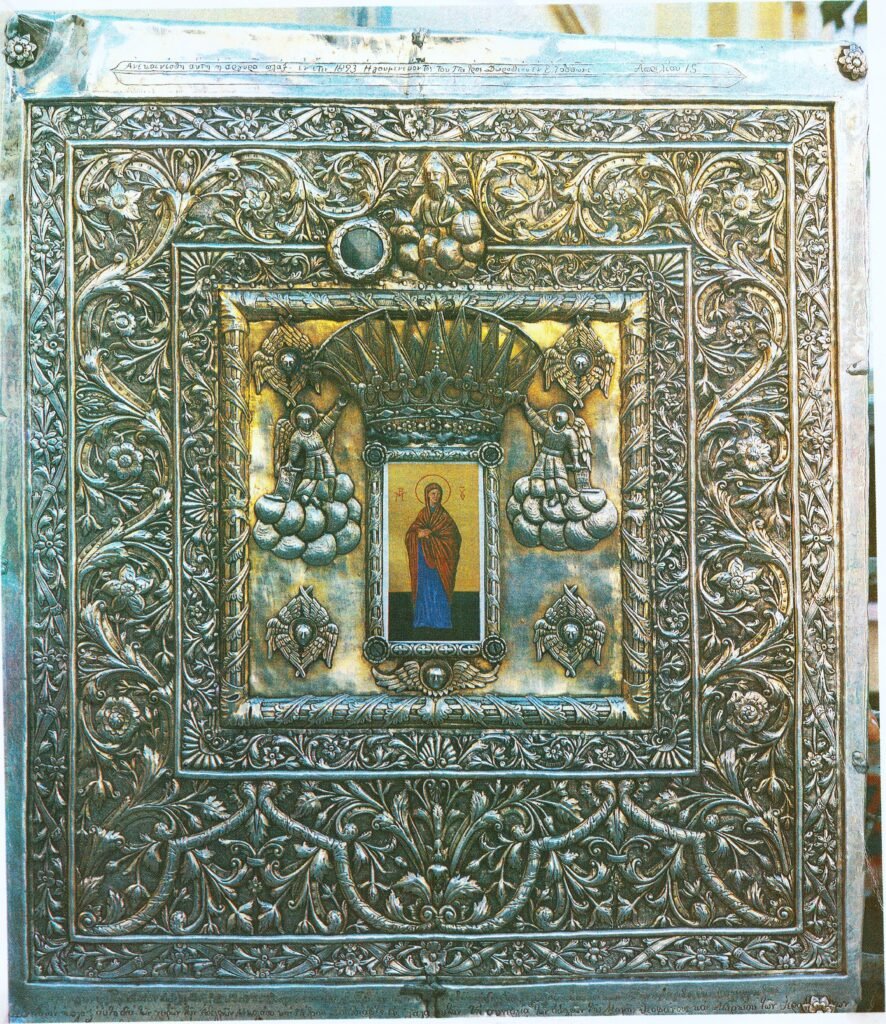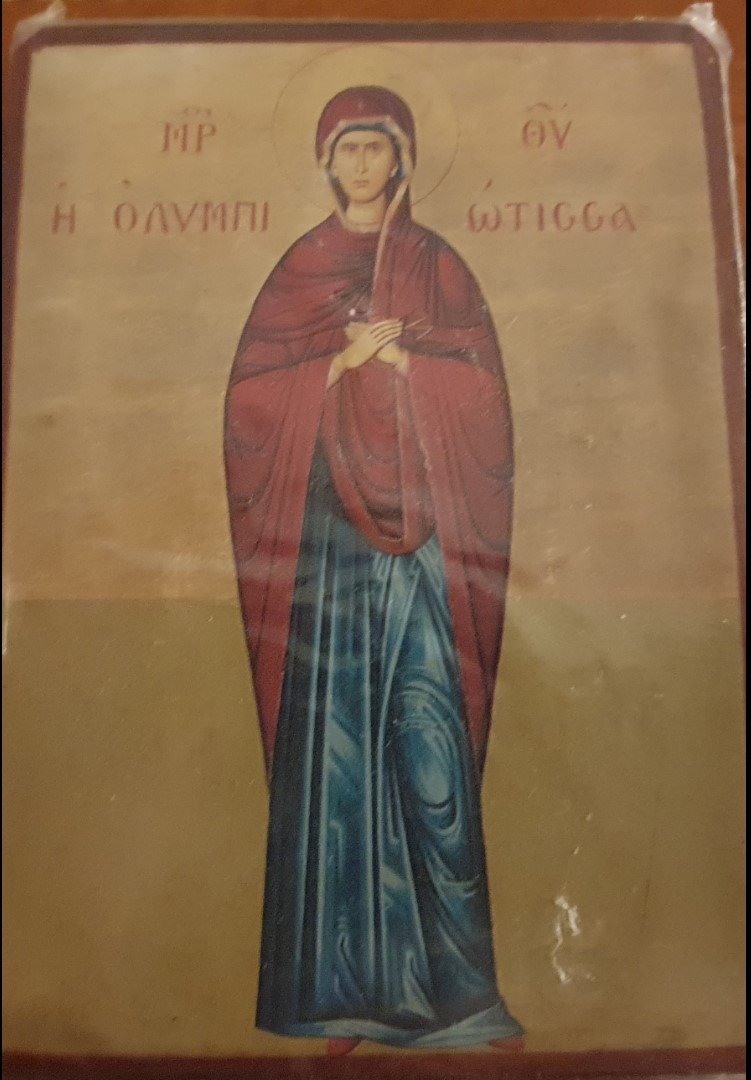Panagia Olympiotissa

The holy icon of the Theotokos ‘Panagia Olympiotissa” originates from an ancient monastery in the village of Karya on Mt Olympus.
Based on oral tradition the icon was found through a miraculous event. The date of the transfer is not exactly known as historical evidence was lost during Ottoman rule.
One night a shepherd saw a light shining from a wild bush. Fear set upon him and he reacted by throwing a stone towards the illuminated bush. His throwing hand immediately withered. He ran to the village and mentioned the incident to his fellow villagers. The next day the villagers gathered and proceeded to the area identified by the shepherd where they discovered the icon of the Holy Theotokos in which the stone which the shepherd had thrown was lodged. The shepherd repented and his hand was healed. The villagers carried the icon in procession to the monastery located at Elassona, ‘Panagia Olympiotissa’ where it is kept and honored to this day.
The residents of Elassona, wishing to express their gratitude for the help of the Holy Theotokos for the liberation of the city of Elassona from the Ottomans in 1912, accompany the holy and miraculous icon in procession from the monastery to the Metropolitan Church of Saint Demetrius every year on October 5, the eve of the anniversary of the liberation.
The icon has dimensions of 11 x 7 centimetres while with the illustrated silver lining the total dimensions are 66 x 58 centimetres. It is painted on wood and the Holy Theotokos is depicted standing without the Divine infant, her hands crossed in a prayerful stance. On the icon is the abbreviation “Mother of God”. At the upper left side of the icon remains the same lodged stone which the shepherd had thrown with fear.
‘Rejoice O Virgin Theotokos, of Mt Olympus.’

